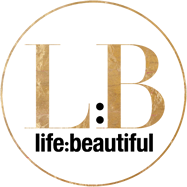
Departments
Make

Pin It!
In an office space or for a spot to gather favorite quotes, pinup boards are a fun way to organize.
Pinup boards have come a long way from the standard cork and frame. One thing that hasn’t changed is how useful they can be. Commit to getting organized while putting your style on display by personalizing your board. Check out two ways to upgrade an ordinary pinup board and customize it to fit the look and feel of your space.

Sailor's Knot Pin Board
This Knot Board starts with a preframed cork board wrapped in a piece of fabric, softening the hard lines and creating a looser style. Colorful cording is hot-glued and pinned to the board with upholstery tacks. Sailor's knots are glued to the corners. Paint thumb tacks to personalize your board.
Materials
- Duck canvas, 39 inches x 27 inches
- Cork Board, pre-framed 35 inches x 23 inches
- Staple Gun and 5/16-inch staples
- Ruler
- 20 Upholstery Tacks
- Scissors
- Felt string, one 3½-yard piece and four 20-inch pieces
- Hot glue gun
- Picture hanging kit (optional)
Instructions
Lay canvas face down and center cork board on the canvas. Secure with staple gun by wrapping the top edge of fabric to the back of the cork board, spacing staples every 1 to 2 inches. Repeat for bottom, left, then right edges, pulling canvas taut so there are no ripples.
On the front of the cork board, make a light pencil line 2 inches inset from the edge to use as a guide for the felt string border. Starting at one of the bottom corners, hot glue the end of the longer piece of string to the board. Use the upholstery tacks to secure the string to the board, spacing the tacks evenly. Use hot glue to secure the string when you reach a corner. When the cording reaches the starting point, trim and hot glue down.

Tie each of the shorter pieces of string into a sailor's knot and secure with hot glue (see steps 1–4, above). Trim excess string. Attach picture hanging hardware to the back, if desired.

Jute Frame Pin Board
This Jute Frame Board uses 1 to 2 spools of jute wound tightly around an empty frame to create texture. Horizontal jute strands glued to the inside of the frame repeat the design element and provide a place to hang notes. Ribbon, raffia, leather strips, string and dozens of other materials would work equally well, transforming the look and feel. A striped fabric-covered cork board adds visual contrast against the solid colored wall.
Materials
- 2 rolls of jute
- 18×22-inch self-framing, assembled or premade canvas frame
- Hot-glue gun
- Scissors
- 17½×21½-inch cork backing
- Cork-backed metal ruler
- Utility Knife
- Self-healing cutting mat
- 19×23-inch piece of fabric
- Spray adhesive
- Staple gun
- 3/8-inch staples
- Picture hanging kit (optional)
Instructions
Hot glue end of jute to the back of the frame. Wrap the jute tightly around the frame, securing the corners with hot glue on the back of the frame. Place the frame face down. Cut 4 strands of jute to the width of the inner frame. Spacing them evenly, hot glue strands horizontally across the frame on the backside of the frame.
Spray the cork evenly with spray adhesive. Adhere one edge of the fabric to the cork and smooth. Slowly roll the rest of the fabric piece down smoothing as you go. Trim the excess fabric to be flush with the cork using your ruler, utility knife and self-healing cutting mat.
Lay the fabric-covered side of the cork down onto the back of the frame. Staple the cork to the frame.
Attach wall fasteners to the back if desired.
We want to keep in touch.
Don’t miss out on the latest Life:Beautiful updates, promotions and news.








